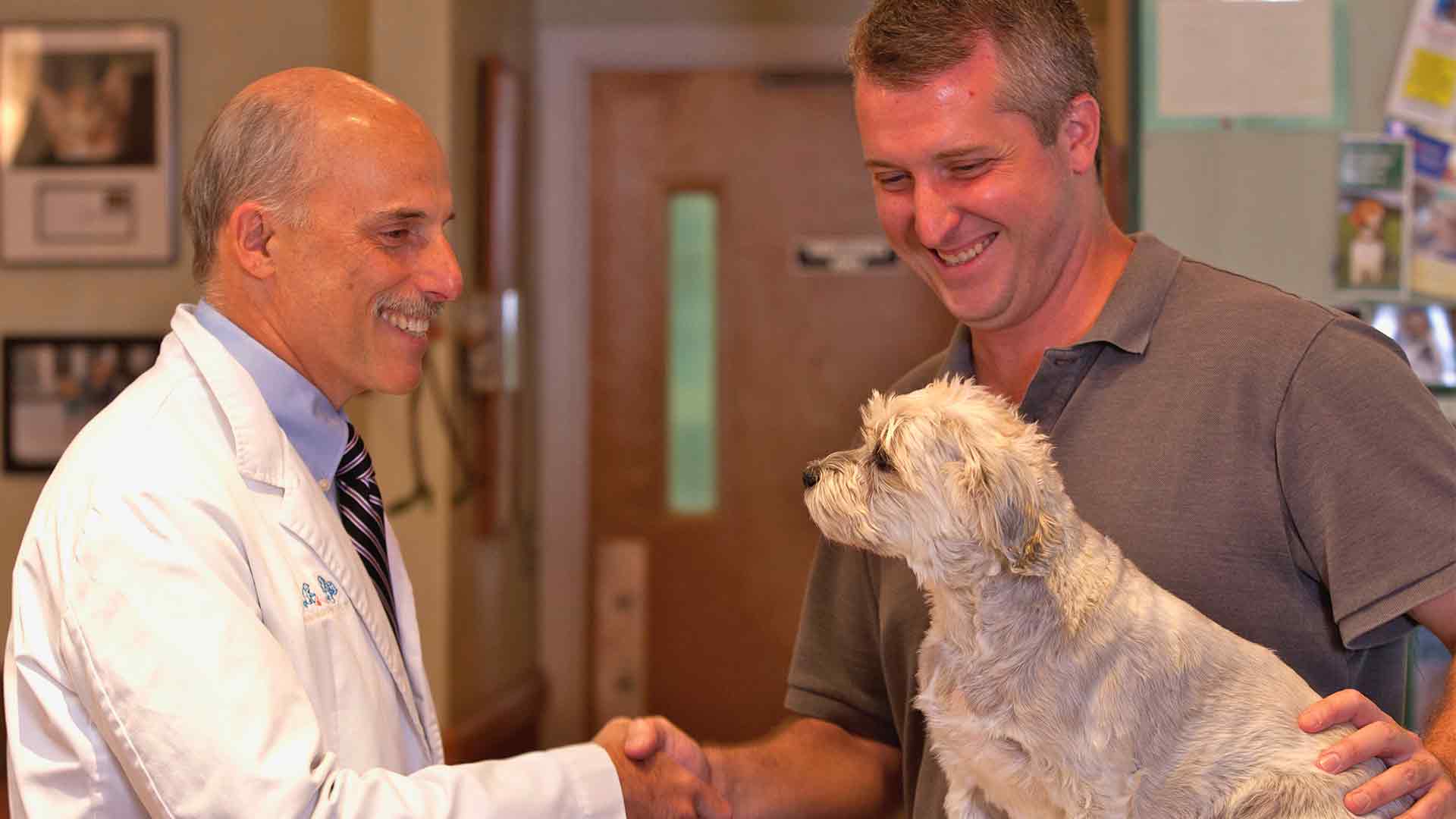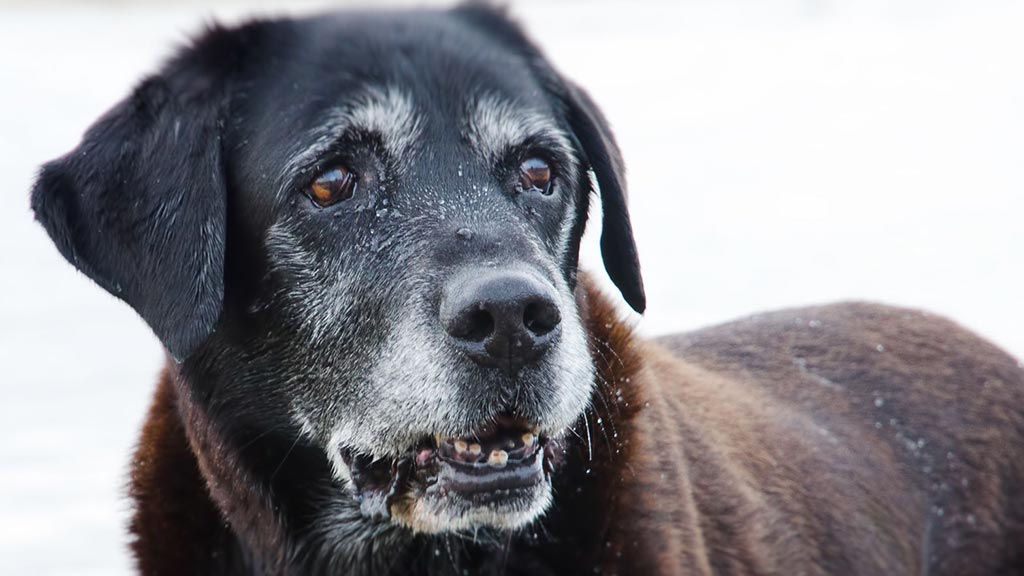
Signs That Your Pet is Dying
Watching an elderly or sick pet decline in health is an emotionally draining experience. Here are signs that your pet’s health is waning and that he or she may be nearing death.
Free Phone Consultation!
Need to talk to you one of our veterinary professionals?
Animal Medical offers FREE 10 minute phone consultations and answers your pet health questions!
Don’t Assume The Worst
Skipped meals; lethargy; reluctance to move; doing well one day, but not the next…all of these can be symptoms that your older or sick dog is starting the dying process. But how do you know for sure?
Free, 10-minute Phone Consultation With A Veterinary Professional
We offer free 10-minute, phone conversations with a veterinary professional if you want our thoughts on what your pet may be going through. We also know that many pet owners don’t want to put their older, sick pet through a possibly-stressful battery of tests, but keep in mind that Animal Medical trains all team members to keep pets calm while they are with us and that our hospital is a Feline Gold veterinary practice, a prestigious designation by the American Association of Feline Practitioners awarded to hospitals that have systems in place to minimize stress for cats. We also have a number of ways for clients to finance veterinary care.
If we haven’t recently physically examined your pet, we are restricted by NY law to diagnose or prescribe anything over the phone, but we can still talk to you about what’s going on and give you some informed guidance. NY law also forbids us from talking to any pet owner residing outside of New York State.
How Do I Know If My Pet Is Dying?
Here is a list of symptoms most frequently experienced by very sick or end-of-life patients. If your pet is experiencing any of the symptoms mentioned in this post, reach out. We’ll be happy to talk to you on the phone.
Weight Loss and Lack of Appetite
Weight loss is not always a sign that your pet is dying, but it’s certainly a sign that something is wrong. Here are some considerations and helpful tips for pets experiencing weight loss.
Weight Loss Linked To Disease, Nausea and Decreased Appetite
Weight loss can be caused by metabolic conditions like thyroid disease, cancers, or conditions like irritable bowel syndrome that prevent the proper absorption of nutrients. Pets with liver disease, kidney disease, or diabetes can experience nausea that causes them to turn off from their food. Sometimes rehydrating patients or giving them medication to decrease their nausea helps to restore a dog or cat’s appetite.
It’s important to note that early stage liver and kidney disease as well as diabetes can make pets very sick, but treatments exist to turn the symptoms around and to considerably extend the quality and length of life of these pets, so don’t assume the worse. We encourage you to reach out to us so that you can make an informed decision.
Pain
Pain can also cause pets to eat less. Pets may be hungry, but they are too painful to move to their food bowl to eat. Sometimes medicating pets for pain works to restore their appetite. If your pet is panting while resting in a climate-controlled environment, consider pain as a possible cause and make an appointment with us to have it treated. Other signs of pain include reluctance to move, stiff movement, and a hunched body posture.
Medication Mixed Into Food
Sometimes pet owners mix their pet’s medication into the pet’s food, but the bitter taste of the medication can turn off an already-nauseated pet. If your pet has been prescribed an antacid for nausea, give the medication as directed, typically 30-60 minutes prior to the meal. Other medications are best administered after the pet has eaten, but check with us first for more information. Be sure to use our free 10-minute veterinary phone consultation if you have a question.
If you can’t properly administer pills by mouth, talk to us about a pet piller, a small plastic device that makes pilling pets easy. You can also try crushing the pill and mixing it with a thick paste like peanut butter, honey, soft cheese, or Nutrical, a high caloric supplement specifically formulated for pets not interested in eating. Scoop the pill mixture onto your finger and scrape it off onto the roof of your dog or cat’s mouth. Make sure that you get all of the mixture into your pet’s mouth and wash your hands thoroughly after you administer the medication.

This is a pet piller. It safely positions the pill far enough in the back of your pet’s throat that your pet will swallow the pill without a lot of undo stress for everyone involved. Clicking the image will take you to Amazon where you can browse.
Pet Won’t Eat?
Pets that have been diagnosed with a terminal illness, that are already under the supervision of one of our veterinarians for weight loss or lack of eating, can be tempted to eat with any of the following human foods that are safe for pets:
Scrambled, cooked eggs with or without cheese
Cheese
Small portions of peanut butter
Cottage cheese
Lunch meats
Cooked chicken (baked or boiled)
Cooked beef (baked or boiled)
Cooked ground beef (sautéed without oil)
Tuna fish
Fancy Feast (both dogs and cats will eat it)
Hills Prescription A/D (available at Animal Medical, A/D is a high caloric, very palatable food that can be mixed with water and force fed by mouth using a needle-less syringe. It’s also easy to administer on the end of your finger or on a tongue depressor to pets that need extra coaxing).
Don’t Force Terminally Ill Patients To Eat
When coaxing a pet to eat, be careful to watch for signs of how they feel about eating. Once allowed to smell or taste a very appetizing food, some pets will eat, but once your pet turns away and refuses, you should weigh the benefits of feeding a terminally ill pet against the stress you are causing him or her. Pets that have a curable disease, or one that can be managed, need to eat to get well. If this is your pet’s case, call us for our advice on other ways to coax your pet into eating.
Reluctance To Move
Pets that are very sick or in the process of dying are reluctant to move and will often experience some complications from their inactivity:
- Bedsores
- Increased stiffness due to inactivity
- Muscle loss
- Bedwetting
- Bed soiling
- Constipation
What To Do For Pets That Don’t Want To Move
If your pet is reluctant to move, you should certainly have your pet evaluated for pain by one of our veterinarians. Pain can almost always be treated by injection or with oral medication.
Very aged or sick pets may have decreased muscle mass and may be unsteady on their feet. You can buy harnesses like the one shown below to help support your pet while walking. Do not allow your pet to jump onto, or off of, high spots like the bed or the sofa. Use a harness to support your pet if he or she is walking up or downstairs. It is very common for sick or failing pets to fall downstairs, so always make your pet wait for assistance. Hold onto the railing while you support your pet so that both of you don’t fall.
Encourage your pet to move with your support. The activity will help with proper elimination and blood flow. If your pet cannot move, make sure that you change his or her body position every few hours to prevent bed sores and blood pooling.
Constipation due to inactivity or an increased diet of tempting, all protein foods like chicken or beef, can be managed with a non-flavored, fiber supplement, but it’s very important that you administer fiber under the direction of a veterinarian. If pets are dehydrated or if you give too much fiber, you will make the constipation worse.
Difficulty Staying Warm
Pets nearing the end of their lives have more difficulty maintaining their body temperature. You may see them shivering in climate controlled areas in which they have never shivered before. Provide your pet a blanket to snuggle into so that he or she can stay warm.
Confusion and Non Responsiveness
It’s not uncommon for dying pets to act disoriented or to not respond when you call them or enter a room. A combination of malnourishment and dehydration inhibits the proper functioning of the brain. Your pet may also have decreased vision and hearing loss associated with old age that is contributing to his or her non-responsiveness. If your pet is completely nonresponsive, call us.
Exercise Intolerance
Pets that are nearing the end of life may have a significantly compromised heart or lungs and won’t be able to walk at their normal pace. You’ll have to stop more often during walks and you’ll see your pet panting even when he or she is doing simple exercise like walking up a flight of stairs.
Remember that exercise intolerance can also be associated with any of the above-mentioned signs that come with advanced age and the dying process like anorexia, dehydration, malnourishment, arthritis, and pain.
Sunken Eyes and Features
As your pet moves closer to the end of life, continued muscle wasting and weight loss will give your pet’s eyes and face a sunken, drawn appearance. Your pet’s entire body will appear emaciated.
Dehydration
Very sick and dying pets may not be drinking enough or are vomiting or have diarrhea that causes them to become dehydrated. Dehydration is a significant problem unto itself and can seriously compromise an already very sick pet. Giving your pet the hydration that he or she needs doesn’t always require hospitalization and can sometimes be done during an office visit. We can also provide pet owners the training and the equipment they need to rehydrate their pet at home provided they are under our veterinary care.
Pale Gums and Cold Extremities
Very sick and end-of-life cats and dogs often have pale gums, but pale gums can be associated with a number of treatable or manageable medical conditions like internal blood loss, cardiac disease, or anemia associated with some toxins like rodenticides, so if you pet is not under our care, please consider taking advantage of our free 10-minute phone consultation. If your pet has been diagnosed with a disease by one of our doctors, call us about the pale gums and we’ll give you instructions on how to manage it at home or provide you with other assistance.
Social Detachment
Pets nearing the end of life often distance themselves from their human family, their adopted ‘pack’. Your pet may choose a resting spot on a remote part of your property, or stay in his or her bed and avoid the family unit. This behavior can be driven by a number of conditions, but we see it often in patients that are near their end of life. If your pet is under our care and has been diagnosed with an end-of-life condition, respect your pet’s interest to be alone. Ensure that he or she has access to food and water and is mobile enough to reach it.
Bed Soiling and Incontinence
Your end-of-life pet may lose control of his or her bladder or bowels or may be too weak to get up to eliminate. Pets hate eliminating in their sleeping space. Clean urine and feces thoroughly from your pet’s bedding. Keep your pet’s coat free of urine and stool to avoid skin irritation. Purchase a mattress protector, cover it with adult pee pads, and then place your fitted sheet over the pee pads to hold them in place.
Conclusion
Watching a pet die is hard. Your pet will have good and bad days and your emotions will rollercoaster with each one. Certainly if you want someone to talk to, we are here for you. We can answer all of your questions, offer you a number of solutions to make things easier for both you and your pet, and provide understanding and compassion for what you are going through.








